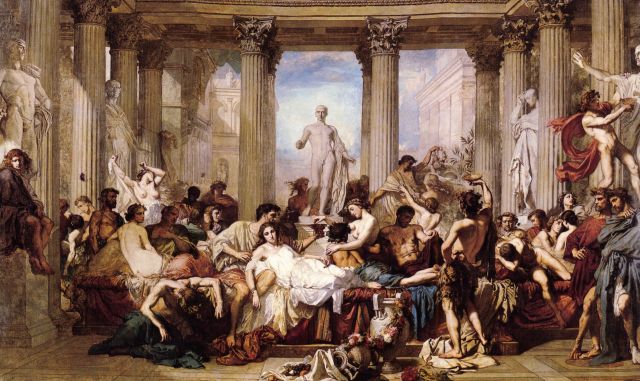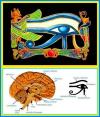

| Online: | |
| Visits: | |
| Stories: |
‘Tis The Season… Christmas or Something Else In Disguise?
‘Tis The Season… Christmas or Something Else In Disguise?

What if you were to learn that the very celebration of Christmas and New Year’s was rooted in nothing more than a pagan festival that has continued to deceive the masses for over two thousand years? Would it come as any surprise that it would be cloaked as a “gift” that appears to have been delivered by an angel of light? What if you were to learn that your good faith has been misguided and whom you thought you worshiped has actually been another all along, unbeknownst to you?
These are some pretty tough questions that only you can answer. To have the benefit of free will is a double edged sword that comes with great responsibility. Are you prepared to be honest with yourself and have the courage to face your fear in light new information?
What I’m certain we can agree on, is these are holidays that are celebrated by countless people in many ways. For many, from a religious point of view, others from a traditional point of view and for businesses a profitable point of view. Regardless of what way you choose to celebrate, you will most likely be surprised to learn where, in fact, this is all derived. It is highly encouraged, for anyone who seeks “truth”, to thoroughly research this subject, compare for yourself and then decide. This is a brief introduction to a subject that warrants serious consideration.
“A traditional commemoration of the birth of Jesus which include gift giving, family and other social gatherings and symbolic decorating on December 25th for Western Christianity and some Eastern churches [as well as] the secular world [non-Christian]“.
Let’s note some of the specifics of the Christmas/New Years’ tradition and symbolic decorating:
Celebrated December 25th; candles, lights, trees, wreaths, garland, stocking; birth [of Jesus "Savior" (sacrifice) from evil forces], nativity, worship of the “Son”, (King of the Jews); star, gift-giving, caroling, cards, eggnog/drinking, special meal/feast, cookies (ginger-bread, Santa), chestnuts; social gatherings (Christmas parties); garlands, mistletoe, holly; gold, frankincense and myrrh; elves, Santa Claus, St. Nicholas, Father Christmas; red, green, silver, gold, fur trim and of course children.
Government offices and courts close, banks are closed, most businesses in general are closed, schools are closed and in observance – most employees receive the day off with holiday pay.
When was December 25th designated as the month and date of Jesus’ birth?
“Although the actual date is unknown, by the early-to-mid 4th century, the Western Christian Church had placed Christmas on December 25th, which coincidentally corresponds with ancient polytheistic festivals that occurred near the Roman winter solstice.”
What was the most popular ancient festival which predated the inception of both Christianity and Christmas in the 4th century?

“An ancient Roman festival in honour of the deity Saturn, held on 17 December of the Julian calendar and later expanded with festivities through to 23 December [and later to December 25]. The holiday was celebrated with a sacrifice at the Temple of Saturn, in the Roman Forum, and a public banquet, followed by private gift-giving, continual partying, and a carnival atmosphere that overturned Roman social norms…”
In Roman mythology, Saturn was an agricultural deity who was said to have reigned over the world in the Golden Age, when humans enjoyed the spontaneous bounty of the earth without labor in a state of innocence.
Santurnalia was a festival of light leading to the winter solstice, with the abundant presence of candles symbolizing the quest for knowledge and truth. The renewal of light and the coming of the new year was celebrated in the later Roman Empire at the Dies Natalis of Sol Invictus, the “Birthday of the Unconquerable Sun,” on December 25.
The popularity of Saturnalia continued into the 3rd and 4th centuries AD as the Roman Empire came under Christian rule…”
What were the traditions of Saturnalia and How Did Christmas Come to Be Celebrated on December 25?
This holiday was a week of lawlessness and was celebrated with participation in a public banquet, followed by private gift-giving, continual partying, gambling and masters providing table service for their slaves. This was referred to as “the best of days”.
In his dialogue entitled Saturnalia, the ancient Greek writer poet and historian Lucian, “describe the festival’s observance in his time. In addition to human sacrifice, he mentions these customs; “widespread intoxication; going from house to house while singing naked; rape and other sexual license; and consuming human-shaped biscuits.”
Roman courts were closed, no one could be punished for damaging property or injuring people during the celebration. The festival began when Roman authorities chose “an enemy of the Roman people” to represent the “Lord of Misrule.” Each community selected a victim whom they forced to indulge in food and other physical pleasures throughout the week and at the festival’s conclusion, December 25th, Roman authorities believed they were destroying the forces of darkness by brutally murdering this innocent man or woman.
Furthermore, the festival included free speech referred to “December liberty” by the Augustan poet Horace. Slaves were served meals by their masters and they had free license to enjoy a pretense of disrespect for their masters with exemption from punishment. They were also privy to gaming with their masters and wagers were made with nuts.
Women mingled socially with men more freely, women entertainers were present at all-male gatherings, there were hints of mask-wearing and the usual toga was set aside in favor of colourful “dinner clothes” otherwise considered in poor taste for daytime wear. They would wear the pilleus, a conical felt cap which was the mark of a freedman. Sexual promiscuity and liberties were acceptable.
Trees were worshipped, mistletoe was used to poison human sacrificial victims, despised citizens were compelled to bring offerings and gifts to the emperors in pre-Christian Rome during Saturnalia which later included gift-giving among the general populace.
The popularity of Saturnalia carried into the 3rd and 4th centuries AD and as the Roman Empire came under Nicene Christian rule in 380 CE and had much influence on the customs of Christmas and New Year. The festival was imported with the hope of taking the pagan masses in with it. Christian leaders succeeded in converting large numbers of pagans to Christianity by promising them that they could continue to celebrate the Saturnalia as Christians.
Nicholas was the only named saint in the 19th century, a Turkish Bishop of Myra, who lived between 270 CE and 345 CE. He was among the most senior bishops who convened the Council of Nicaea in 325 CE and created the Nicene Creed a profession of faith widely used in Christian liturgy (New Testament).
Is this all merely extraordinary coincidence or is there something worth noting here? Although there are many more correlations you will discover in your own research, let’s recap just some of the uncanny similarities:
Saturnalia (Christmas/New Year):
Weeklong celebration (week between Christmas and New Years’)
Celebration of winter solstice, festival ending on December 25 (Christmas Day, birth of the “Son”/sun),
Sacrificial victims used as a symbolic destruction of darkness (Jesus sacrificed as a lamb to set us free from sin “evil/darkness”)
Quest for knowledge and truth (Jesus – the “truth, light and way”)
Human sacrifice (Jesus, gingerbread men),
Conical felt hats (Santa/elf caps),
Door to door singing (caroling)
Gift-giving to the emperor (king) and later in general (wise men bearing gifts, gift-giving to others)
Celebration of the Golden Age (Wise men bring “gold”, decorations of gold)
Special meal being served for slaves (Christmas dinner, employee Christmas parties)
Closure of government, courts, business, etc. (closure of government, courts, business, schools)
Tree worship (Christmas trees)
Festival of lights with candles (Christmas lights)
Fur-trimmed clothing (Santa’s suit)
Intoxication parties carnival atmosphere (New Year’s Eve parties, streamers, confetti, drinking, promiscuity)
Gambling wagers made with nuts (chestnuts)
Poisonous mistletoe used to subdue sacrificial victim (mistletoe used to obligate those “under it” to a kiss, symbolic “kiss of death”?)
Colourful clothes not appropriate for daytime (sparkling New Year’s evening gowns and suits not typically worn for business/ day wear)
Mask wearing (Dawning a Santa beard and mustache, New Year’s masquerade parties)
Senior Bishop Nicholas named saint responsible for creating the Nicene Creed the Christian liturgy of the New Testament whereby proclaiming God’s gift to His children – Jesus (St. Nicholas bring gifts to children, “good little boys and girls but not if your naughty “evil”)
You’re probably starting to get the picture. As stated earlier, this goes much deeper and there are many more connections not listed. However, there are links throughout this context and listed below for further research. Again, if you seek truth and don’t rely on blind faith alone, this is worth investigation. As in all things, the decision is yours to make. May all truth be revealed!
SOURCES:
The Carnaval Celebration That Became Christmas & New Year’s Eve
State Church of the Roman Empire
Saturnalia – Celebrate the Saturnalia
DISCLAIMER: The views expressed herein are the views of the linked author and not necessarily the views of BIN or any potential advertisers. The author does not necessarily adhere to, or endorse, any or all of the links, stories, articles, editorials, or products offered by sponsors found on this site or the site itself.
PERMISSION: The author’s work may be reproduced without permission only provided the author is named as the source and/or linked to the website from which the material was obtained.
FAIR USE: All of the materials and data offered by the contributor are for informational and educational purposes only. Aggregated content may contain copyrighted material. Such material is made available for educational purposes only. This constitutes a “fair use” of any such copyrighted material as provided for in Title 17 U.S.C section 107 of the US Copyright Law. /~/



